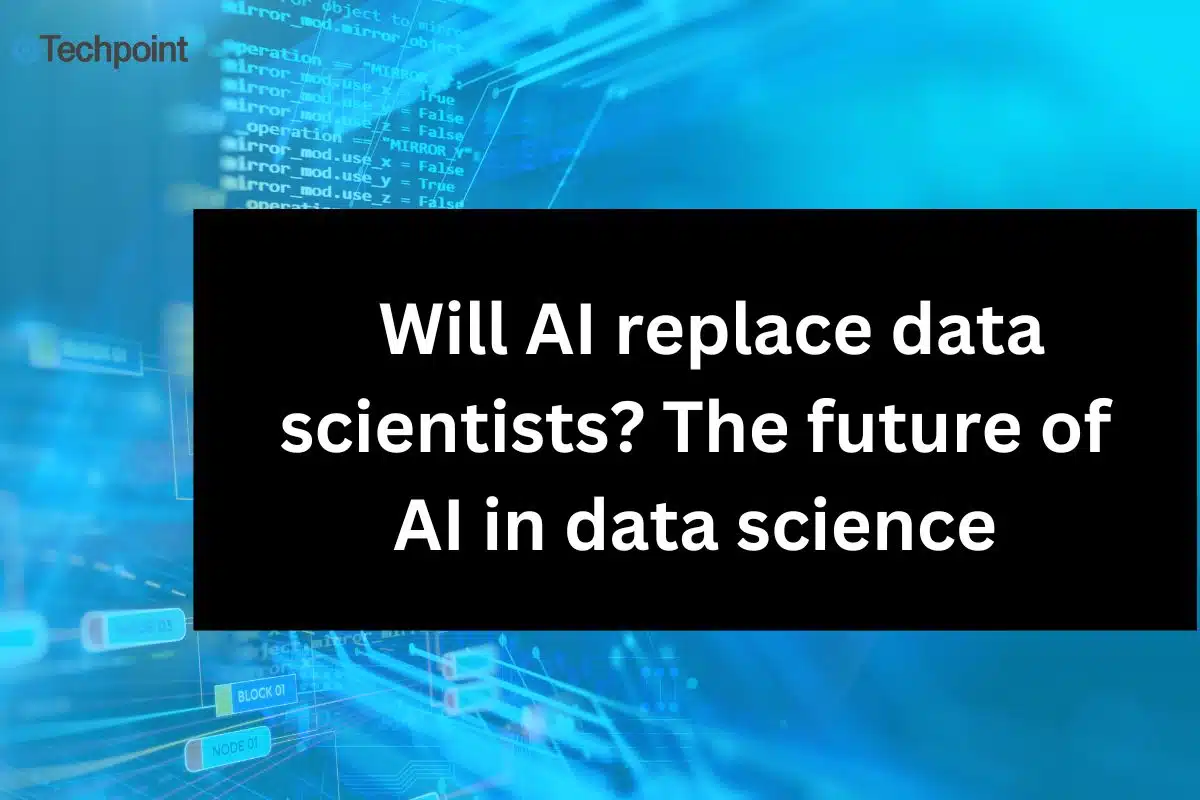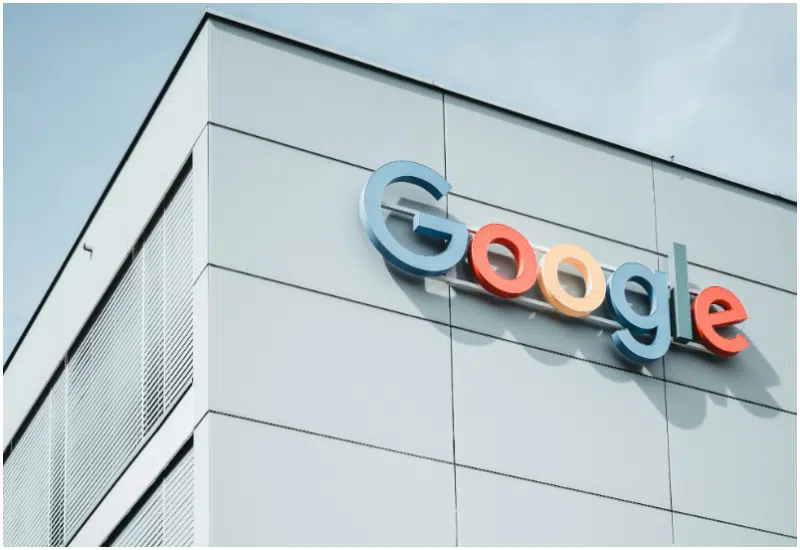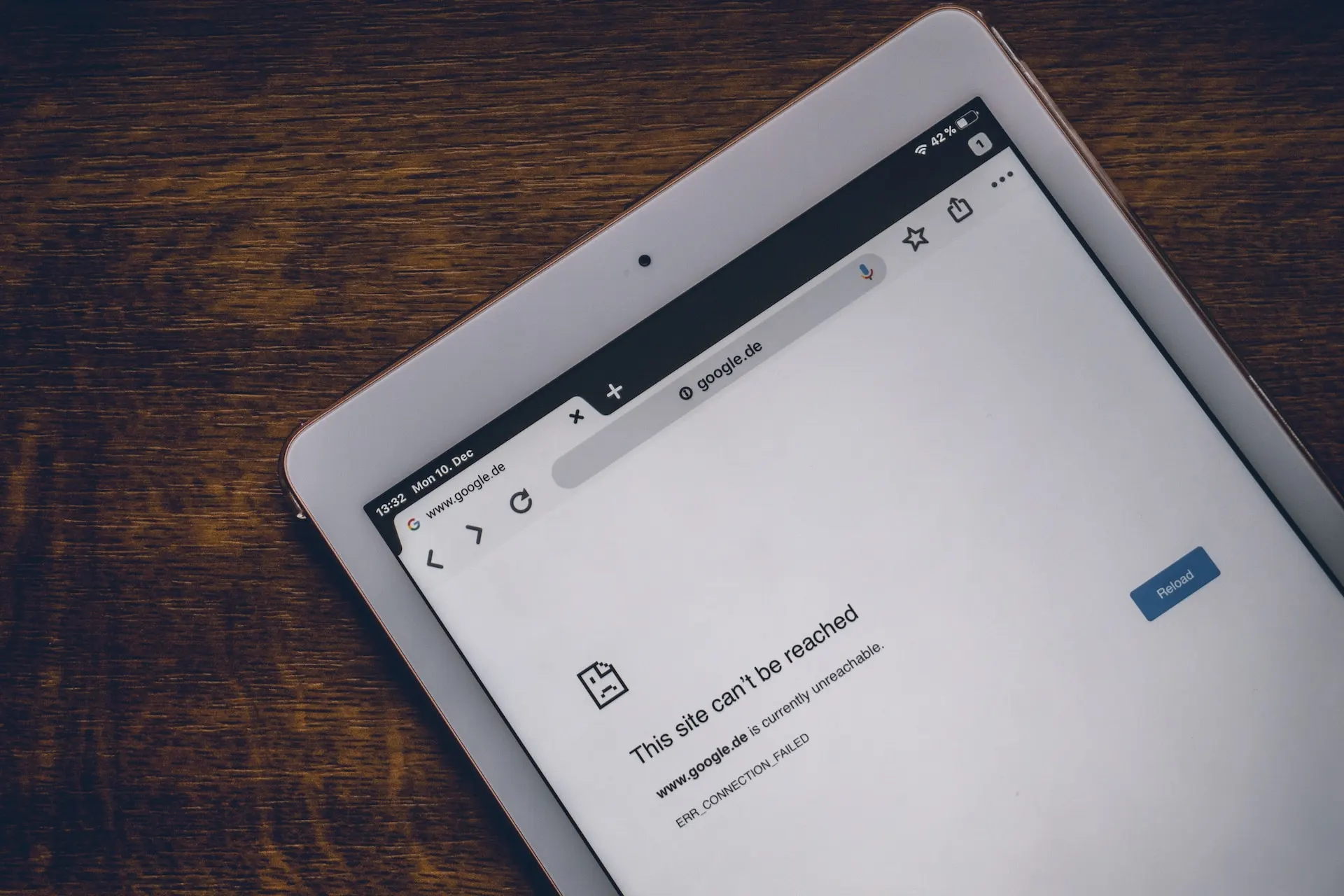Every few months, there’s a new headline screaming that AI is coming for our jobs. First, it was factory workers. Then, writers. Now, data scientists? The idea that AI might replace data professionals has sparked debates, panic, and probably a few existential crises.
AI can now analyze data, build models, and even generate insights, things that once required a human expert. So, should data scientists be worried? Does this mean data scientists are doomed?
Personally, I think the reality is more nuanced. AI is impressive, but it doesn’t have what it takes to replace humans. Data science involves asking the right questions, understanding business problems, and making sense of messy, real-world data. These are things AI still struggles with.
In this article, I’ll break down what AI can (and can’t) do, and data scientists should start updating their résumés or just learn to work with AI instead.
Why people think AI will replace data scientists
There’s a reason people believe AI could take over data science. AI is automating tasks that once required human expertise. From cleaning raw data to building complex models, AI can now handle many technical aspects of data science. Here’s why some think data scientists may become obsolete:
- AI Automates Data Preparation
Cleaning and preprocessing data is one of the most time-consuming parts of data science. AI tools can now handle missing values, detect outliers, and normalize raw data without human intervention. Tasks that once took hours can be done in minutes, making traditional data wrangling seem less essential.
- AutoML Can Build and Tune Models Without Humans
Platforms like Google AutoML and H2O.ai allow non-experts to create predictive models with minimal coding. AI-driven automation selects features, trains multiple models, and optimizes performance all without a data scientist’s input. The gap between technical experts and business users is shrinking, making many wonder if specialized roles will still be needed.
- AI Makes Data Science More Accessible
Traditionally, data science required coding, statistical knowledge, and domain expertise. Now, AI-powered tools enable anyone to:
- Generate insights using simple drag-and-drop interfaces.
- Automate machine learning workflows without writing code.
- Interpret data through AI-generated summaries and visualizations.
- Businesses Want Faster and Cheaper Solutions
Companies are always looking to cut costs and improve efficiency. Instead of hiring large teams of data scientists, businesses can use AI-powered tools to automate many data-related tasks. AI reduces overhead, speeds up decision-making, and scales operations without requiring a proportional increase in staff. For companies focused on efficiency, AI is an attractive alternative to traditional data teams.
- AI Already Outperforms Humans in Some Areas
AI models process vast amounts of data faster than any human. In industries like finance and healthcare, AI is already:
- Detecting fraud in real-time.
- Predicting equipment failures before they happen.
- Personalizing content recommendations at scale.
- AI Continues to Improve at an Unprecedented Rate
Machine learning models are getting more sophisticated every year. With advances in deep learning, reinforcement learning, and natural language processing, AI is becoming better at analyzing complex data and making predictions. As AI becomes more capable, some assume it will eventually require less human oversight, reducing the demand for data scientists.
These factors fuel the belief that AI will replace data scientists. But the reality is more complicated. AI can automate many tasks, but that doesn’t mean it can replace human expertise. In the next section, I’ll break down what data scientists actually do and why AI still falls short.
What data scientists actually do
People who think AI can replace data scientists usually don’t understand what we actually do. It doesn’t end with coding; it also has a lot to do with thinking.
A machine learning model can process numbers, but it won’t tell you which business problem to solve. It won’t challenge flawed assumptions, and it certainly won’t explain its insights in a way that makes sense to decision-makers. Now, here’s what we do as humans to bridge the gap;
- Defining the Right Problem
Before touching any data, I need to figure out what we’re solving and why it matters. AI doesn’t ask, “Is this even the right problem?” It just optimizes whatever task it’s given. If a company wants to predict customer churn but hasn’t defined what “churn” means in their context, AI won’t correct them—I will.
- Communicating Results
AI can generate reports, but it can’t convince a CEO why they should care. Numbers don’t drive decisions; stories do. My role isn’t just to present findings; it’s to translate data into strategy. A machine learning model might predict that customer churn will increase by 20%, but it won’t tell you why or what to do about it. That’s my job.
- I connect data to real-world decisions – AI spits out probabilities, but I translate that into actionable strategy.
- I simplify complexity – Executives don’t care about algorithm selection. They care about what actions to take.
- I challenge assumptions – AI works with the data it’s given. I question whether that data is even relevant in the first place.
AI is great at automation, but it doesn’t replace critical thinking, creativity, or communication. Data science isn’t just about numbers; it’s about making sense of them. And for that, human expertise isn’t going anywhere.
- Understanding the Business
A model is only useful if it aligns with business goals. I don’t just build predictive models, I make sure they solve real-world problems. AI can generate thousands of insights, but which ones actually move the needle? That’s my job to decide.
- Making Data Usable
AI thrives on clean, structured data. The problem is that most real-world data is a disaster. I spend hours (sometimes days) dealing with:
- Incomplete and inconsistent datasets – AI tools can clean some of this, but they don’t understand why a certain data point might be wrong.
- Contextual nuances – A missing value might be an error in one dataset but totally normal in another. AI doesn’t know the difference.
- Bias in data – AI models learn from historical data. If that data is biased, the model will be too. AI won’t question it, but I will.
An AI model trained on biased hiring data will keep making biased recommendations. It takes a human to recognize and correct these issues before they cause real-world harm.
The current role of AI in data science
AI is deeply embedded in modern data science, acting as a powerful assistant rather than a replacement. It automates repetitive tasks, accelerates model development, and helps process vast amounts of data efficiently. Here’s what AI currently does in the field:
- Automates Data Cleaning
Preparing data is one of the most time-consuming parts of a data scientist’s job, and AI-powered tools have significantly streamlined this process. AI can detect missing values, remove duplicates, and even standardize data formats. Some tools go a step further by identifying outliers and inconsistencies that might indicate data quality issues.
While AI makes the cleaning process faster, human oversight is still necessary to ensure data integrity, especially when dealing with complex datasets that require contextual understanding.
- Handles Feature Engineering
Feature engineering, the process of selecting, transforming, and creating new features, can make or break a machine-learning model. AI-driven systems now assist in this by automatically identifying the most relevant variables, generating new feature combinations, and applying transformations to improve model performance.
Automated feature selection tools use algorithms to assess which features contribute the most to predictive accuracy, reducing the trial-and-error process that data scientists traditionally had to go through.
- Optimizes Model Selection and Hyperparameter Tuning
AI has taken over much of the experimentation phase in model building. Automated Machine Learning (AutoML) platforms can test multiple algorithms, compare their performance, and even fine-tune hyperparameters. Traditionally, data scientists spent hours manually adjusting settings like learning rates, regularization parameters, and decision tree depths.
AI-driven tools now automate this process, significantly reducing the time needed to find the best-performing model. However, choosing the right modeling approach for a business problem still requires human judgment.
- Enhances Pattern Recognition and Predictive Analytics
AI is exceptionally good at spotting trends and correlations in large datasets, far better than a human could manually. Businesses rely on AI-driven analytics to forecast market trends, identify customer behavior patterns, and detect anomalies. In finance, AI helps predict stock movements. In healthcare, it assists in diagnosing diseases based on medical imaging.
While AI provides powerful insights, it doesn’t understand causation, meaning human expertise is still needed to interpret patterns correctly and avoid misleading conclusions.
- Powers AI-Driven Decision Support Systems
Many industries now use AI to generate data-driven recommendations. E-commerce platforms personalize product recommendations, logistics companies optimize supply chains, and marketing teams use AI to determine the best advertising strategies. AI helps businesses make faster decisions by processing vast amounts of data in real time.
But while AI can surface insights, it doesn’t understand business strategy, it still requires humans to contextualize the information and make final calls.
- Automates Reporting and Visualization
AI has made it easier to generate reports and visualizations without manual effort. Tools like Tableau and Power BI now integrate AI-driven analytics, automatically summarizing key trends and creating dashboards.
Some AI systems can even generate written summaries of data findings. While this reduces the need for basic reporting tasks, communicating results to stakeholders in a way that drives action remains a human responsibility.
- Improves Natural Language Processing and Text Analysis
AI has transformed the way text data is processed and analyzed. Sentiment analysis tools scan customer reviews and social media posts to gauge public opinion. AI-powered chatbots analyze and respond to customer inquiries in real-time.
In legal and finance, AI scans documents to extract relevant insights. However, AI still struggles with nuance, sarcasm, and contextual understanding, which limits its ability to fully replace human analysts in text-heavy domains.
- Supports Real-Time Anomaly Detection
AI is widely used in fraud detection, cybersecurity, and quality control. Machine learning models monitor financial transactions for suspicious patterns, detect network intrusions, and flag manufacturing defects. These systems operate at a scale and speed that human analysts could never match. However, false positives and context-based errors still require human intervention to ensure accuracy.
The limitations of AI in data science
AI is powerful, but it has limits. It doesn’t think, understand, or make decisions the way humans do. I’ve seen AI do some incredible things, but I’ve also seen it confidently produce nonsense. That’s because AI follows patterns; it doesn’t truly understand anything. And in data science, that’s a big deal.
Here are some areas AI is lacking:
- Lack of Critical Thinking and Intuition
Data science involves knowing which models to use, when to use them, and why they make sense. AI doesn’t have:
- Common sense – If a model predicts that customers will buy more winter coats in July, AI won’t question it. A human will.
- The ability to challenge assumptions – AI works with the data it’s given. It won’t ask, “Are we even looking at the right problem?”
- Big-picture thinking – AI focuses on optimization, but it doesn’t consider long-term business impact or unintended consequences.
- Ethical Considerations
AI models reflect the data they’re trained on. If that data has bias, the model does too. AI doesn’t care if its predictions are unfair; it just maximizes accuracy.
Some examples are:
- Hiring algorithms – Some AI-driven hiring tools have discriminated against women and minorities because they were trained on biased historical data.
- Credit scoring models – AI can deny loans based on patterns that unintentionally penalize certain demographics.
- Predictive policing – AI models have reinforced systemic biases by over-policing certain communities.
As a data scientist, part of my job is catching these issues and making sure models are fair and ethical, something AI can’t do on its own.
- The Need for Domain Expertise
AI doesn’t have industry knowledge. It doesn’t understand finance, healthcare, or retail, it just processes data. That leads to problems like:
- Misinterpreting trends – AI might flag a sudden drop in sales as a major issue when, in reality, it’s just a seasonal dip.
- Ignoring external factors – AI models don’t account for things like new regulations, cultural shifts, or economic changes unless explicitly programmed to do so.
- Making unrealistic recommendations – AI might suggest cutting costs in a way that saves money but damages customer experience.
That’s why human oversight is crucial. I bring industry knowledge, critical thinking, and business strategy, which AI lacks.
- Garbage In, Garbage Out: AI’s Dependence on Data
AI only works if the data is good. Bad data = bad predictions. Some common problems:
- Incomplete or inconsistent data – AI can’t always fill in the gaps correctly.
- Data drift – What worked yesterday might not work today. AI won’t notice when patterns change unless it’s retrained.
- Noisy or misleading variables – AI doesn’t know which features are actually important, it just optimizes based on what it’s given.
The bottom line is that, like us, AI is a tool, not a decision-maker. It lacks intuition, ethics, and real-world understanding. As data scientists, our role isn’t just building models, it’s making sure they make sense. AI can help, but it still needs us to guide it.
So… will AI take over data science?
No. AI is changing data science, but it’s not replacing data scientists.
We’ve seen that AI can automate tasks, assist with modeling, and even generate insights. But it still lacks critical thinking, business acumen, and the ability to handle messy, real-world challenges. Companies might use AI-driven tools more, but they still need humans to guide decisions, validate results, and ensure ethical use.
The demand for data professionals is actually growing. As AI evolves, so does the role of the data scientist. Instead of just building models, we’re focusing more on strategy, communication, and AI governance.
If there’s one takeaway, it’s this: AI isn’t making data scientists obsolete. It’s making our work more impactful if we adapt and keep learning.
Final thoughts
AI isn’t here to take over my job; it’s here to change how I work. It’s automating tasks, speeding up workflows, and making data science more accessible. But it still can’t think critically, understand business context, or make ethical decisions on its own. Those are things I still need to do.
The best way forward? Use AI as a tool, not a threat. Keep learning, adapt to new technologies, and focus on the skills AI can’t replace.
What about you? Do you think AI will change data science in ways we haven’t imagined yet? I’d love to know. Drop your thoughts in the comments!










